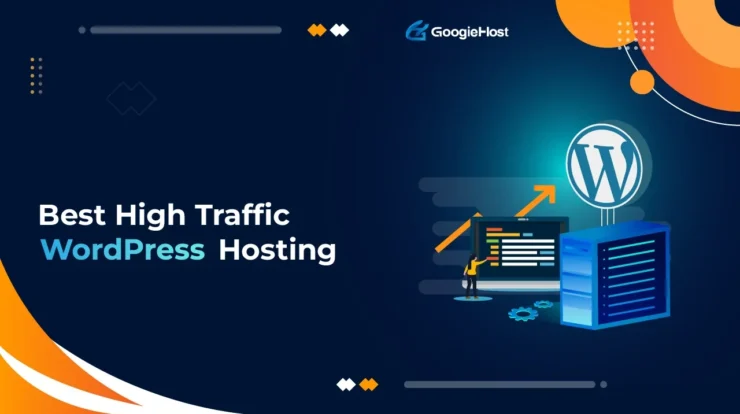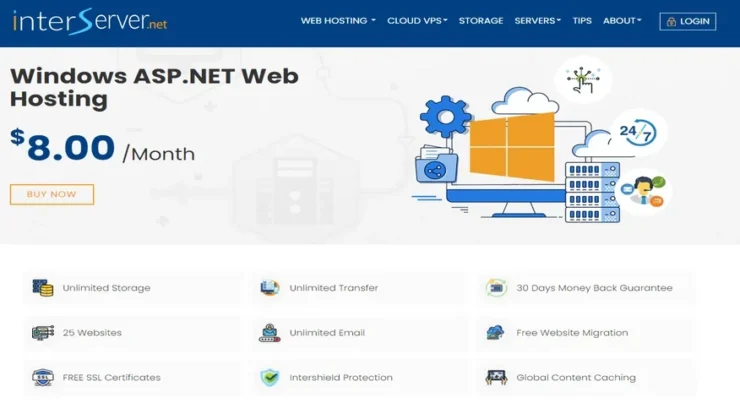
Navigating the complex landscape of web hosting becomes crucial for developers handling substantial traffic surges, ensuring seamless user experience and preventing site crashes.
Choosing the right hosting platform is paramount for developers whose projects attract a high volume of users. A reliable hosting infrastructure directly impacts application performance, user satisfaction, and ultimately, the success of their projects.
This article dives into the critical considerations for selecting the best hosting for high traffic devs, exploring various types of servers, configurations, and key performance indicators.
Choosing the right hosting provider for a high-traffic application can be a make-or-break decision, influencing everything from application responsiveness to customer retention. Poor hosting choices can lead to downtime, frustrated users, and lost revenue.
Modern web applications often require powerful server resources to handle peak load demands. This translates directly into the necessity for a scalable and robust hosting environment. The ability to manage fluctuating traffic is essential.
The best hosting for high traffic developers needs to offer predictable performance, robust security features, and the flexibility to adjust resources based on fluctuating traffic volumes. Features like load balancing and redundant backups are critical in ensuring continuous service.
This examination of top-tier hosting options provides developers with the essential knowledge required to choose the optimal solution for their high-traffic projects. Choosing the best hosting solutions is key to ensuring website reliability and performance under pressure.
Understanding the specifics of server-side technologies like PHP, Node.js, or Python, along with the potential demands of database interactions, is important when selecting the ideal hosting solution for high traffic devs. These factors will guide your selection of the optimal hosting package.
Scalability and High Traffic Handling Capacity
Scalability is a fundamental requirement for hosting solutions designed to support high traffic volume, a critical factor for developers striving to deliver seamless experiences to users.
A robust hosting platform must be capable of adapting to fluctuating traffic demands without compromising performance or reliability. This adaptability is crucial to handle spikes in user activity, ensuring websites and applications maintain responsiveness and availability.
High-performance hosting for developers hinges on the ability of the server infrastructure to scale automatically, adding processing power and memory resources as traffic increases.
Selecting hosting that provides this flexible scaling capability is paramount for successful high-traffic applications, preventing website slowdowns and ensuring a consistent user experience across peak and off-peak times.
The chosen hosting solution should provide the option to adjust resources like RAM, CPU, and storage based on real-time traffic, ensuring the application remains responsive and prevents service interruptions due to overloaded servers.
Server redundancy and failover mechanisms are critical elements within a scalable hosting architecture, designed to guarantee continuous operation even in cases of hardware failures or network outages. This redundancy significantly reduces downtime risks, protecting high-traffic applications from significant disruptions.
Choosing a cloud-based hosting platform can often provide superior scalability compared to traditional hosting options, as cloud environments can rapidly provision additional resources as needed, dynamically adjusting to the ever-changing needs of high-traffic applications.
Robust load balancing strategies employed by the chosen hosting provider are essential for optimal performance under heavy traffic loads. Load balancing distributes traffic across multiple servers, preventing any single server from becoming overwhelmed and ensuring faster response times.
A high-traffic developer needs to carefully evaluate the scalability features of a hosting provider, ensuring the provider has the infrastructure and tools to accommodate the ever-changing needs of a dynamic application. This crucial factor directly impacts user experience and application performance under pressure.
Comprehensive monitoring tools provided by the hosting platform play a vital role in the ongoing assessment of server resources and real-time traffic patterns, enabling developers to identify potential bottlenecks and proactively optimize application performance.
Scalability and High Traffic Handling Capacity
Scalability is a critical attribute of hosting solutions catering to high traffic, a crucial aspect for developers aiming for optimal user experiences.
A capable hosting platform must flexibly adjust to fluctuating traffic demands without compromising performance or reliability. This ensures applications remain responsive and available during periods of increased user activity.
High-performance hosting solutions rely on automated scaling within the server infrastructure. This involves dynamically adding processing power and memory resources as the traffic load rises.
Choosing hosting with automated scaling capability is vital for successful high-traffic applications. It prevents performance slowdowns and provides a consistent user experience during peak and off-peak hours.
This adaptability is a key differentiator between hosting providers that can handle demanding applications and those that may struggle under significant stress. A high-quality hosting solution anticipates and addresses these needs.
A crucial aspect of scalability involves appropriate server configurations. The right server architecture, coupled with optimized resource allocation, facilitates seamless transitions during traffic spikes.
Developers need to understand the hosting provider’s scaling strategies and their capacity to handle sudden increases in traffic demand without sacrificing performance. This proactive approach ensures smooth user journeys.
Monitoring and managing resources effectively is a critical component of scalability in high-traffic hosting. Real-time monitoring of server usage allows for proactive adjustments.
Bandwidth allocation and management are essential in preventing bottlenecks during peak periods. A robust hosting infrastructure must accommodate adequate bandwidth to support a significant surge in traffic requests.
High-traffic websites frequently experience traffic spikes, and a suitable hosting solution must be prepared to respond swiftly. The choice of hosting profoundly impacts the performance of web applications.
Furthermore, the hosting provider’s technical support plays a critical role in maintaining service continuity during scaling. Responsive technical support can resolve issues promptly, ensuring smooth operations.
The ability of hosting to scale predictably is a key performance indicator in selecting the best hosting platform. Choosing a solution that can anticipate and address traffic surges will ensure consistent high-performance results.
Effective scaling, combined with appropriate technical support, creates a robust foundation for developing successful applications capable of handling the demands of substantial user traffic.
Scalability and Resource Allocation for High-Traffic Websites
Scalability is paramount when choosing a hosting provider for high-traffic developer websites, as increasing traffic demands more resources to maintain optimal performance.
The ability of a hosting platform to seamlessly adapt to fluctuating demands is critical. This involves robust server infrastructure, including ample RAM, processing power, and storage space, all vital components for a high-traffic hosting solution.
Reliable hosting providers employ sophisticated algorithms and technologies for efficient resource allocation. These mechanisms dynamically adjust resources based on real-time website traffic, ensuring consistent speed and responsiveness, even during peak usage periods.
Developers need hosting services that can anticipate and accommodate surges in traffic, whether from seasonal peaks, marketing campaigns, or unexpected viral trends. Without this flexibility, a website can experience significant performance degradation or even complete downtime during high-traffic periods.
A vital aspect of scalability is the capacity for horizontal scaling, which involves adding more servers to the hosting infrastructure when needed. This approach is crucial for high-traffic developer websites as it allows the hosting provider to quickly handle increasing demands without compromising performance or the user experience.
Consideration should also be given to the provider’s support for various technologies and their expertise in managing demanding applications. For high-performance and high-traffic websites, the host needs to provide a robust environment capable of handling high volumes of concurrent users and requests.
Efficient management of databases, caches, and content delivery networks (CDNs) is also essential for scalability, directly influencing a website’s loading times and overall performance under pressure. High-traffic hosting solutions need these elements to perform effectively and ensure a seamless user experience for all visitors.
Moreover, a reliable hosting provider will offer detailed analytics and monitoring tools that offer insights into resource usage and potential bottlenecks, enabling developers to proactively address potential performance issues before they affect user experience. This proactive approach to managing resources is a key indicator of a truly scalable hosting solution.
Finally, understanding the provider’s service level agreements (SLAs) and their commitment to uptime is critical. These agreements should specify the guaranteed uptime percentages, ensuring minimal downtime during high-traffic periods and showcasing a commitment to stability. This is crucial for maintaining the availability of high-traffic websites and minimizing potential service disruptions.
Choosing the right hosting provider for high-traffic developer websites requires careful consideration of their scalability features. This involves understanding how the hosting platform can efficiently handle increasing website traffic and manage resources effectively, ultimately ensuring high performance and a positive user experience.
Scalability and Performance for High-Traffic Websites
A crucial aspect of choosing the best hosting for high-traffic developers is understanding and anticipating the potential demands of increasing traffic.
Scalability refers to the ability of a hosting provider to accommodate growing website traffic without compromising performance.
This involves ensuring sufficient server resources, such as RAM, CPU, and storage space, can be dynamically adjusted to handle fluctuating visitor loads.
High-traffic websites often experience peaks and dips in visitor numbers, making a hosting solution with adaptable resources essential.
A hosting platform that can automatically scale resources upward during peak traffic periods, and gracefully handle reduced traffic during off-peak hours, is crucial for maintaining optimal website performance.
Performance, closely related to scalability, dictates how quickly a website responds to user requests.
Fast loading times directly impact user experience and search engine rankings, making optimal hosting critical for developer success.
High-performance hosting providers often utilize advanced technologies, such as Content Delivery Networks (CDNs) and optimized server configurations.
A CDN, for example, distributes website content across various servers geographically, thus reducing latency and ensuring fast loading times for users worldwide. This is particularly important for websites with a global audience.
In addition to robust server infrastructure and CDN implementation, developers should also consider the availability and reliability of the hosting platform.
Unreliable hosting can lead to downtime, impacting user experience and potential business losses.
Reliable hosting services implement redundancy and backup systems to minimize the risk of outages, thereby ensuring consistent website availability.
Choosing the right hosting for high-traffic websites involves looking beyond simply the price. Scalability, high performance, and reliability are key factors that ultimately contribute to a positive developer experience and the success of their websites.
Choosing the right hosting solution is paramount for developers experiencing high traffic, ensuring a seamless user experience and preventing application crashes or slowdowns.
This article highlighted the critical need for robust server resources, reliable uptime, and scalable infrastructure when selecting a hosting provider for high-traffic applications.
Factors like bandwidth, processing power, and storage capacity significantly impact the performance and stability of a developer’s website or application, making the selection of the best hosting for high traffic devs crucial.
Ultimately, developers need hosting that can handle peak loads and future growth, preventing bottlenecks and ensuring a positive user experience. Scalability is key, allowing for smooth transitions as traffic increases.
Investing in reliable, high-performing hosting for high traffic devs is not just an expense; it’s an investment in the project’s success and user satisfaction. The best hosting options provide the necessary resources to manage surges in traffic, safeguard against performance issues, and ultimately contribute to the long-term success of any project.





